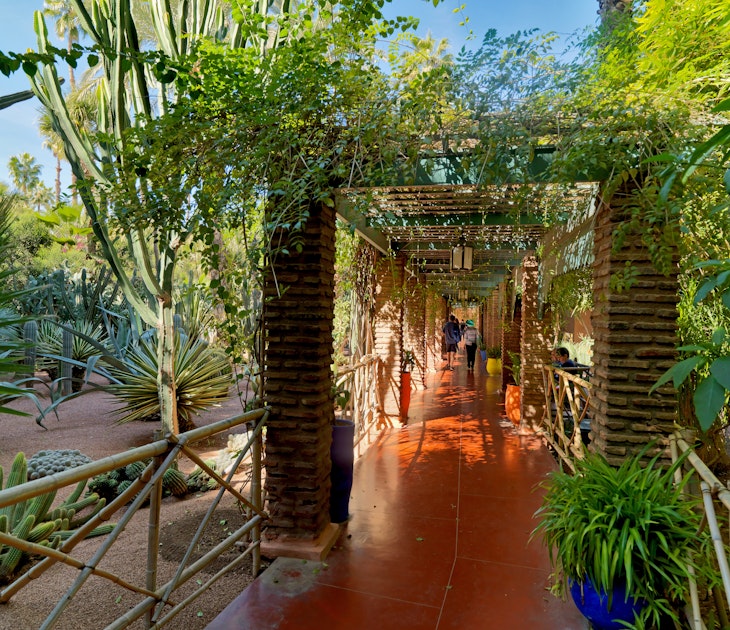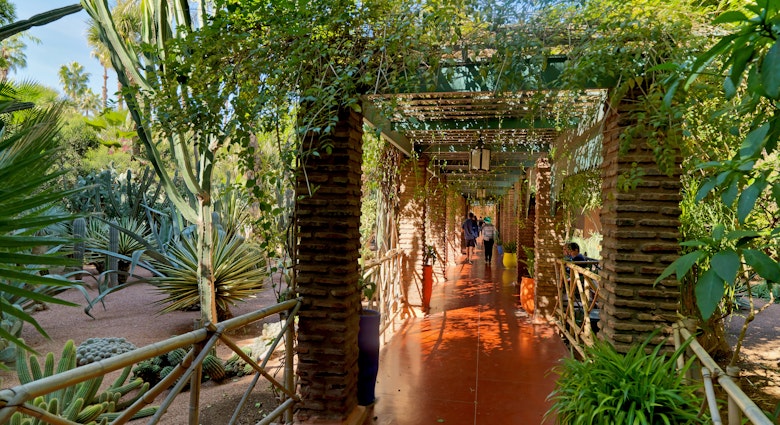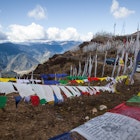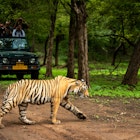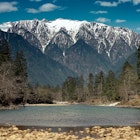I awake in the dark of the night to the sounds of the camp dogs – big, fearsome, toothy creatures barking wildly at something unknown. As I lie in my sleeping bag, cosy inside a yak-hair tent, I wonder what could be out there on the vast and empty grassland.
When morning comes, I learn wolves had approached our camp under the cover of darkness, sending the dogs into a frenzied defence. But the hounds did their job; all the family's precious yaks are present and accounted for, already being milked in the pale light of the high-altitude sunrise.
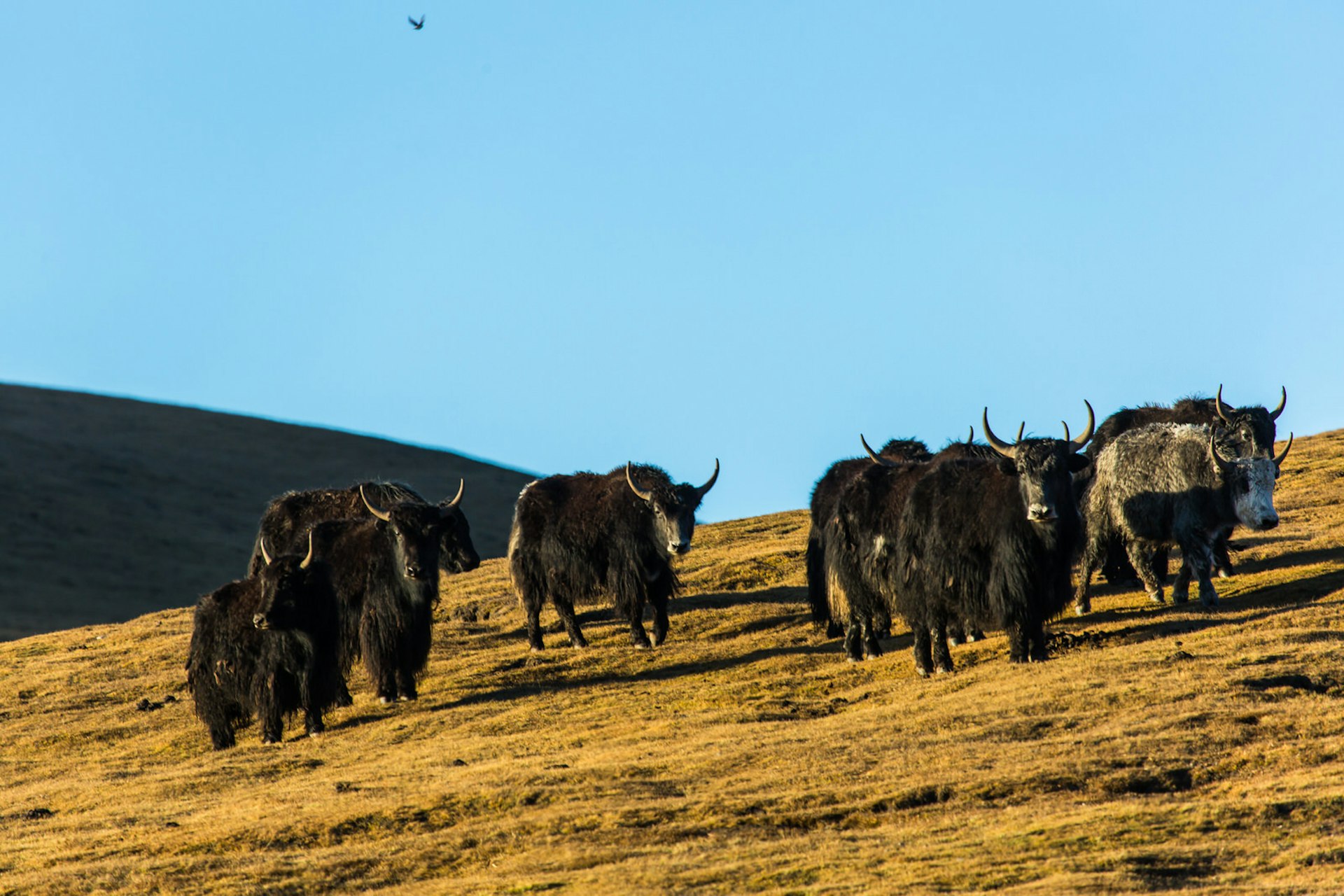
This is what it's like to spend the night at 3600 metres above sea-level, with the nomads of China’s Gannan Tibetan Autonomous Prefecture. A glimpse of lives that revolve entirely around yaks and the seasonal changes of the grasslands.
Seasons of the grasslands
Gannan nomads live on the vast region of lush, high grasslands that occupy the southern part of Gansu province. This is an area also known as Amdo, one of the three traditional regions of Tibet. With a way of life that has endured for centuries, their activities follow the seasons and they move to different grasslands throughout the year, according to the condition of the grass.
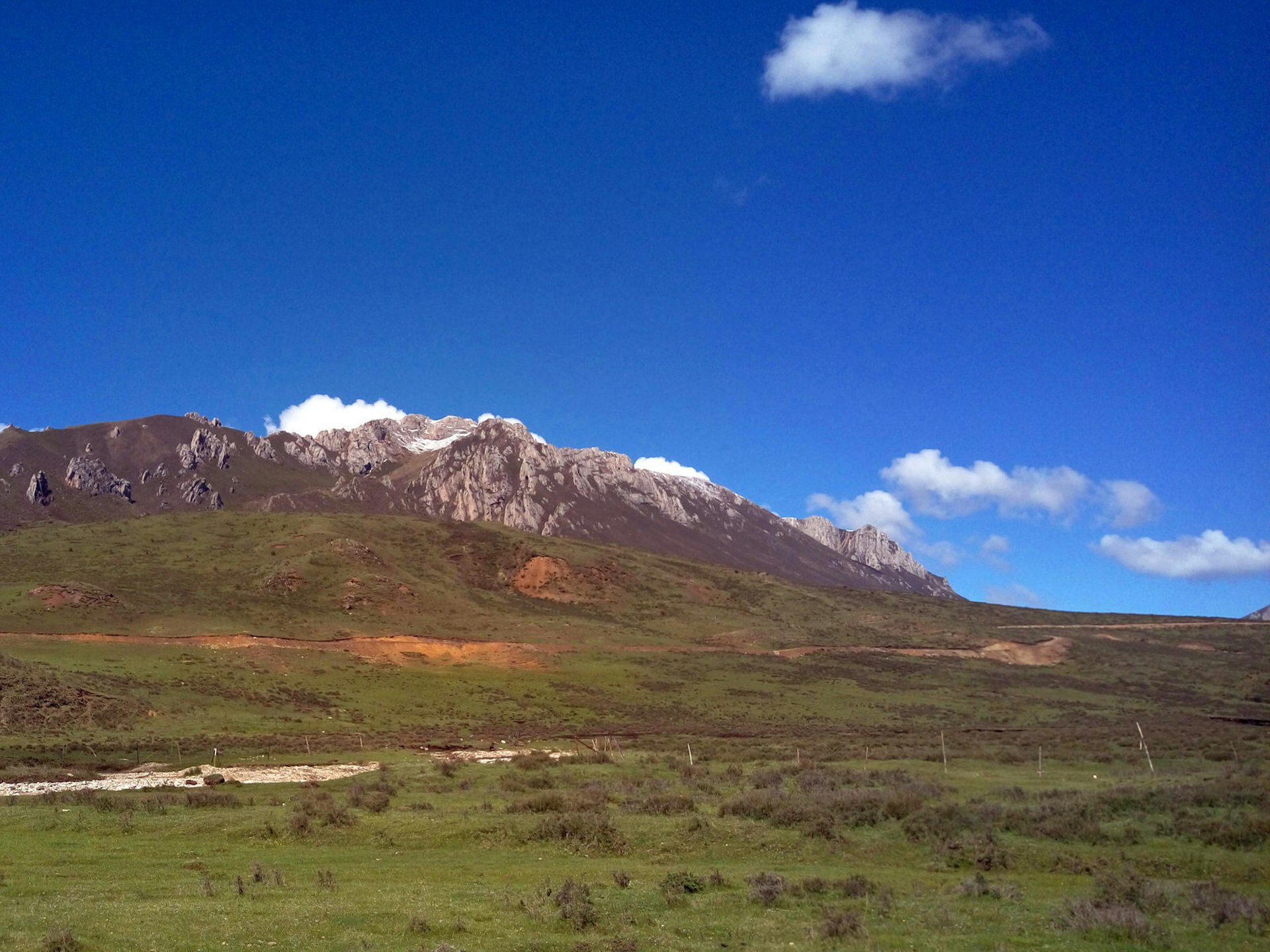
It's the start of the summer season and we are amongst the hills west of the town of Langmusi. During spring, summer and autumn, the nomads move every 40 or 50 days, using yaks to transport their belongings. Days are spent tending the yaks, ensuring they fatten sufficiently to survive the cold winter ahead. Winter arrives for the nomads once several snows have fallen in late October, and it is time to move to a special winter grassland, where they'll remain until spring returns in May.
The hills here are sparse and green, and during the day become dotted with black speckles as yaks graze up and down their slopes. The family’s yak-hair tent is the only shelter against the temperamental weather here. As we cook lunch one day, the weather changes: sun, grey clouds, hail and back again. A chill wind whips through the tent and small balls of ice fall through a hole in the roof designed to let the stove-smoke escape. The nomads live through much colder conditions than these, too – winter temperatures can reach minus 20 degrees Celsius overnight. My hosts are certainly hardier than me, I think, shivering underneath a yak wool poncho I bought in Langmusi before we set out.
Camp living
Facilities at the camp are basic; going to the toilet involves asking the family members where they have tied their dogs and choosing a spot well away from these formidable beasts, who are trained to defend the yaks from any potential threat – me included. There are no trees and nowhere to hide while you get down to business.
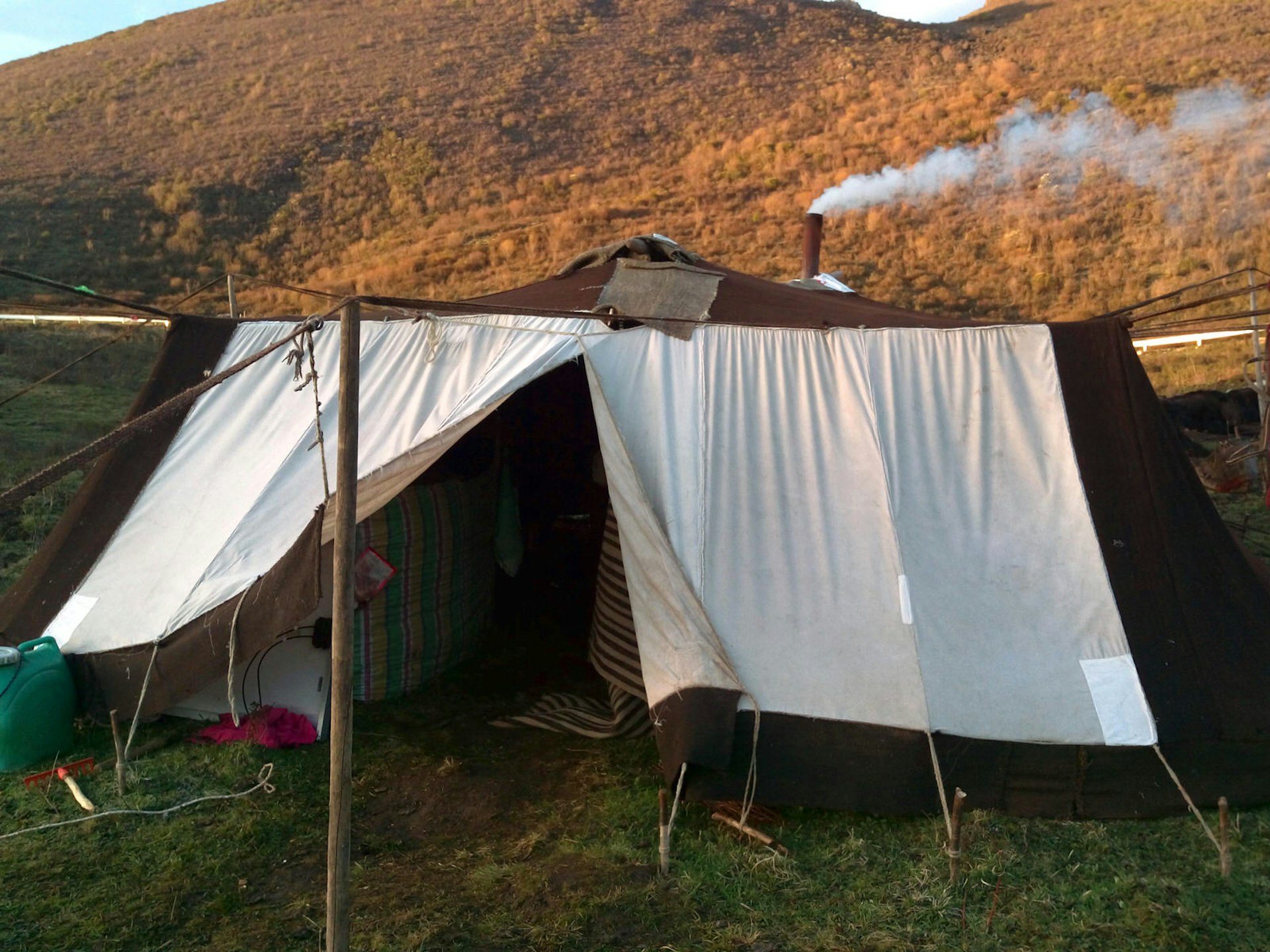
At 5am, I leave the safety of the tent, having been desperate for the toilet since the dogs woke me. Everyone is busy with their morning chores so there’s no one to ask where the dogs are currently tethered. I creep out cautiously beyond the edges of the tent area – every lump of grass, every black baby yak looks like a dog through my post-sleep fog. Desperate not to be savaged while peeing, I quickly find a small dip in the ground. It’s a surreal feeling to be crouched on a hillside in western China, fearing being attacked while watching as two yaks, not 10 metres away, head-butt each other in a tussle for dominance.
Surrounded by animals
I’ve never before lived in such close proximity to animals. We are almost constantly surrounded by yaks or evidence of their existence. The family’s black yak-hair tent is pitched amongst great piles of their dung, which goes into the stove over which our meals of simple stir-fried vegetables and rice are cooked. We eat yak-milk yoghurt, and tsampa (barley flour mixed with fresh, grassy yak butter and cheese). At night, adult females (known as 'bri) and their calves are tied up immediately outside the tent, for safety and for ease of milking in the morning. Their musty smell permeates everything, and their trumpet-like bellowing provides a constant soundtrack to nomadic life.
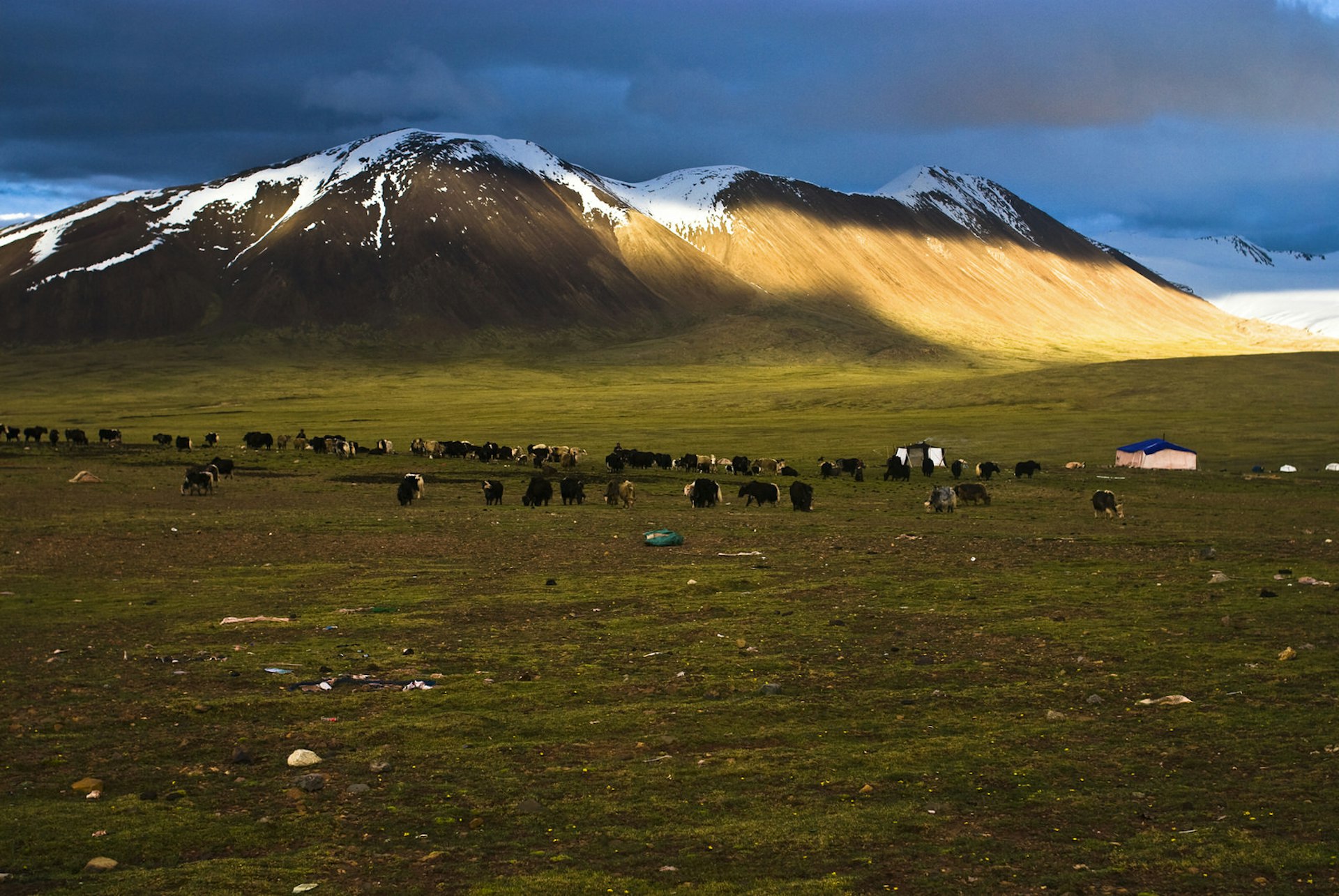
The grasslands surrounding our home are teeming with more animal and bird life. On a hike out into the hills, I watch in stunned wonder as my guide, Hui Du, stands at the edge of a red rock ravine and lets out a piercing cry. Suddenly, not one but six steppe eagles soar out of the crevices in the rock, disturbed by the noise. Their expansive black wings momentarily contrast with the jagged red rocks before they catch the wind and disappear off into the endless sky. Elsewhere, fat marmots and tiny pikas, the eagles’ favourite prey, scurry between their burrows, letting out shrill warning calls as we pass.
Nomadic social order
The apparent romantic simplicity of the nomads’ lives – the endless time spent outside in the fresh air, the lack of technological distractions, the allure of a day of wholesome hard work – belies the hardships they face to survive, especially the women. The most important part of the workforce, women rise each day at 4am in the summer months to milk the yaks. After a night of rest, tethered with their babies close to the tent, the yaks yield the best milk. Nomadic women are expert yak-milkers, temporarily separating babies from mums to reach the precious liquid.
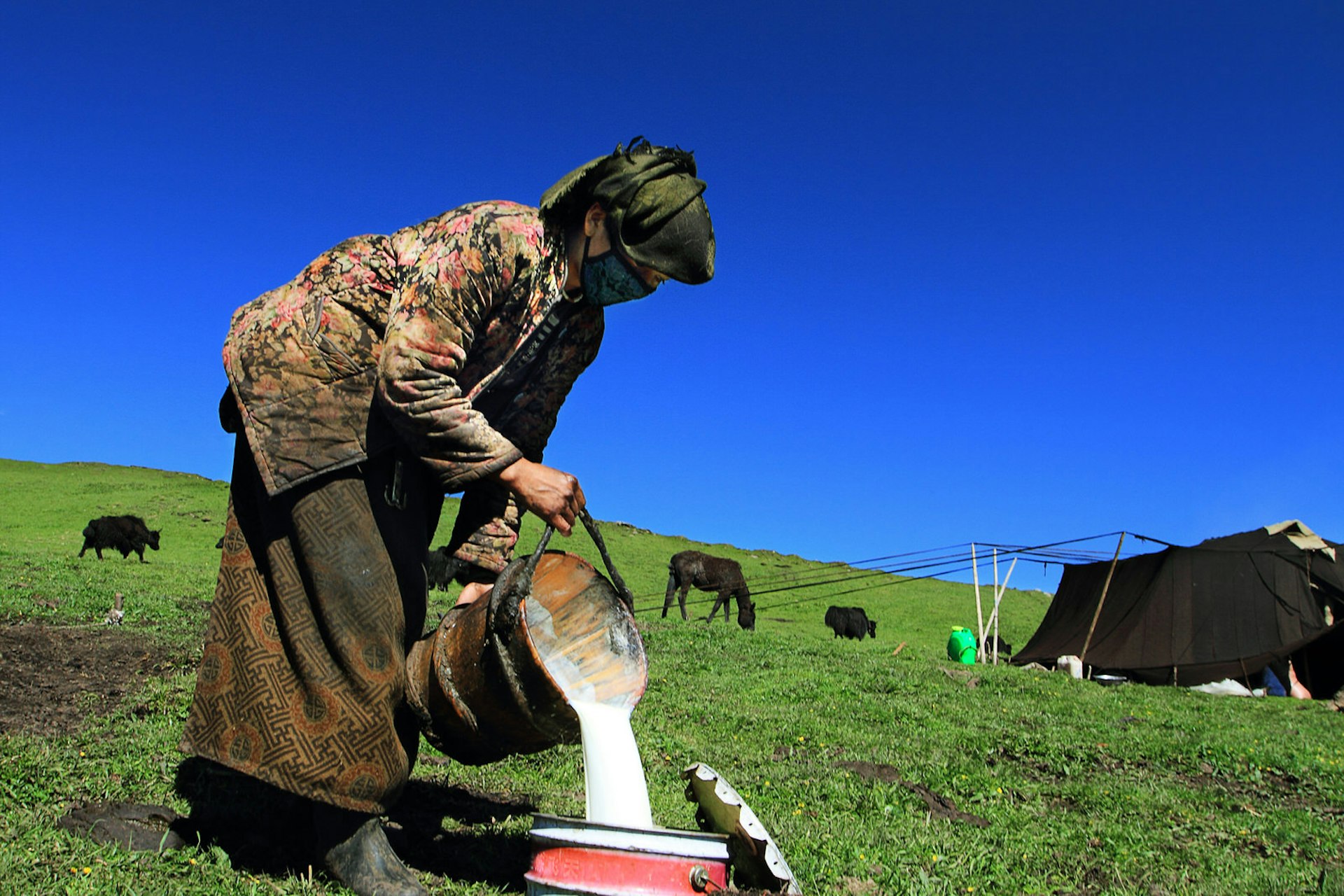
Occasionally the women blow into a yak’s back passage to encourage better milk flow. Though disconcerting for visitors like me, this is a sure sign of these women’s utter comfort around their animals. I’m glad I haven’t been encouraged to take part in the milking process, though – my smell is apparently too unfamiliar to the yaks, who could retaliate with a lethal kick to a stranger attempting to milk them.
The women of the camp are always working, whether milking, collecting water from the nearest river, making butter, or spreading and picking up dung to make fuel for cooking fires. The family allows me to help with some these tasks – scraping up dried dung and emptying it into the store inside the tent is backbreaking work, and the region’s high altitude makes it even harder as my unaccustomed lungs desperately suck whatever oxygen they can from the thin air.
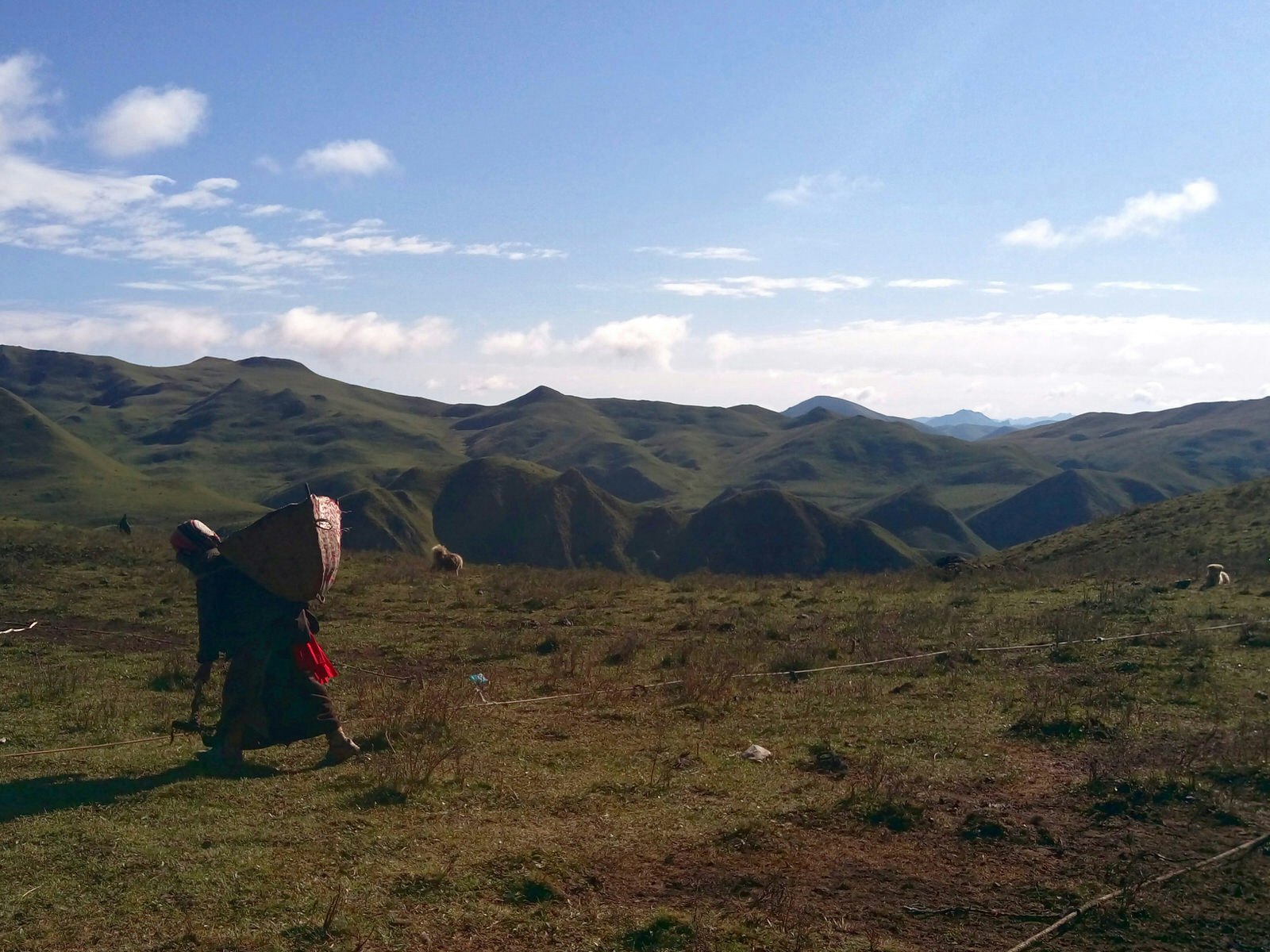
Nomad men have a slighter easier life. After breakfast, they head out to herd and protect the animals on the grasslands. At sunset, they drive the yaks back to camp using a traditional catapult called a pe to sling stones at any beast that lingers too long. Often, however, men spend time in Langmusi town drinking tea with friends, only going back to the grassland once every several days.
As I spend time with the women of the family, trying in vain to make myself useful around the camp, I wonder how long this way of life can continue as cities, with their comforts and economic opportunities, tempt people away from their traditional lifestyles. It’s a sad thought and one that makes me grateful to have had the chance to make their yak-hair tent my home.
Make it happen
Langmusi Tibetan Horse Trekking can organise a homestay with nomads in the region, along with horse treks, hikes and wildlife tours. The owner Liyi, a Sichuan native but a long-time resident of Langmusi, is a fountain of knowledge on life in the area.

